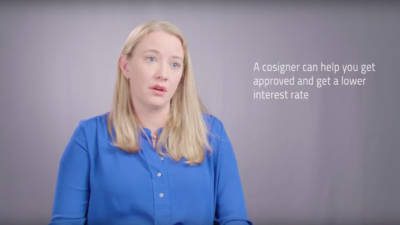Figuring out how to pay for your college education is, at best, overwhelming.
The terminology can be confusing, there are forms to fill out and options to compare. If you completed the Free Application for Federal Student Aid (FAFSA®), then you may have received federal student loans as part of your financial aid award package. These student loans are provided by the government—not private lenders—to help students and parents pay for college. This guide can help you understand the different types of federal student loans so you can feel more confident about making a decision.
There are a few different types of federal student loans available:
- Direct Subsidized and Unsubsidized Loans
- Direct PLUS Loans for parents and graduate students
To determine your eligibility for any federal student loans, you’ll need to first complete the FAFSA.
Direct Subsidized and Unsubsidized Loans
Sometimes known as Stafford Loans, subsidized and unsubsidized loans have fixed-interest rates. To qualify, you must be degree-seeking and enrolled at least half-time at a participating institution.
How do you qualify?
- Subsidized loans are awarded to undergraduate students based on financial need, which is determined by your family’s income as reported on the FAFSA.
- Unsubsidized loans, which are available to both undergraduate and graduate students, are not based on financial need, but you still need to complete the FAFSA to be eligible.
What is the interest rate?
The interest rate is fixed for the life of the loan. For subsidized loans, the government pays the accruing interest while you’re in school. For unsubsidized loans, you are responsible for paying the interest that accrues while you are in school, so you may want to consider making in-school payments to reduce the overall cost of the loan.
Are there any fees?
There is an origination fee that is a percentage of the loan amount and deducted from each loan disbursement, so you’ll ultimately receive less than you borrow.
When do you pay back these loans?
You will be required to start paying back your loans six months after you are no longer enrolled in school at least half-time. You can choose to make payments even when they are not required, which will help reduce the overall cost of the loan. Repayment plans range from 10 to 25 years.
How much can you borrow?
There are annual and aggregate loan limits that are based on your year in school and whether you are a dependent or independent student.
Direct Parent and Grad PLUS Loans
How do you qualify?
- Direct Parent PLUS Loans are available to parents of dependent undergraduate students who want to help their children pay for college. Biological, adoptive, and stepparents are all eligible to apply.
- Direct Grad PLUS Loans are for students attending graduate and professional schools.
For both, a credit check is required for approval. Most schools will require you to fill out either the Parent or Grad application, but check with them first for their preferred process.
What is the interest rate?
The interest rate is fixed for the life of the loan. You are responsible for paying the interest that accrues while you are in school, so you may want to consider making in-school payments to reduce the overall cost of your loan.
Are there any fees?
There is an origination fee that is a percentage of the loan amount and deducted from each loan disbursement, so you’ll ultimately receive less than you borrow.
When do you pay back these loans?
- For Parent loans, unless the parent requests an in-school deferment, repayment will begin immediately after the student receives the final loan disbursement (even if the child is still in school).
- For Grad loans, you will be required to start paying back your loans six months after you are no longer enrolled in school at least half-time. You can choose to make in-school payments, which will help reduce the overall cost of the loan.
Repayment plans range from 10 to 25 years.
How much can you borrow?
The annual limit is the cost of attendance (as determined by the school) minus any other financial aid. There are no aggregate limits for PLUS loans.
Are there other requirements if you choose to accept a federal loan?
You will have to sign a Master Promissory Note, which is a legal document stating your commitment to repay your loans. You’ll also have to attend mandatory online entrance counseling session, where you’ll learn about financial resources to help pay for college, how to manage your loans, and your rights and responsibilities.
What if you fall behind on the monthly payments for your federal loan?
It is important to contact your servicer before you fall behind on payments to see what options are available for your situation. There are several repayment plans including extended and income-driven options. There are also deferment and forbearance options that provide temporary relief from making payments if you meet certain criteria.
FAFSA® is a registered trademark of the US Department of Education and is not affiliated with Discover® Student Loans.





